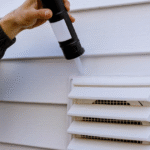Brooklyn’s historic brownstones and modern apartments share a common threat: water damage. When water leaks invade your ceiling, the impact is often underestimated. Ignoring ceiling water damage may seem like a cost-saving move, but the consequences ripple far beyond a stained patch overhead. In this article, we’ll dissect the risks, hidden dangers, and true costs of neglecting water-damaged ceilings in Brooklyn homes.
What Causes Ceiling Water Damage?
Ceiling water damage in Brooklyn is commonly triggered by one or more of the following:
| Cause | Description | Frequency in Brooklyn |
|---|---|---|
| Leaking Roofs | Cracked or missing shingles, old flashing, or improper roof installations allow rainwater to seep in. | High (especially after storms or in older buildings) |
| Plumbing Issues | Pipes running above ceilings may burst, leak, or sweat, especially during winter or due to corrosion. | Moderate to High |
| HVAC Malfunctions | Faulty air conditioning or heating units can drip condensation into the ceiling structure. | Moderate |
| Bathroom Overflows | Water from upstairs bathrooms or kitchens can seep through floors and damage ceilings below. | Frequent in multi-unit buildings |
| Weather Events | Heavy rain, snow, or ice dams lead to sudden leaks and ceiling breaches. | Variable, but rising with climate shifts |
Consequences of Ignoring Ceiling Water Damage
Postponing repairs on ceiling water damage can unleash a cascade of problems that worsen over time. Here’s a look at what you risk by delaying:
- Structural Decay: Water weakens wooden joists, drywall, plaster, and metal fixtures. Over months, this can cause sagging ceilings, cracks, and—if left unchecked—eventual collapse.
- Mold and Mildew: Brooklyn’s humid summers create a perfect breeding ground for mold. These fungi thrive in wet, dark spaces behind your ceiling, releasing spores that trigger allergies, asthma, and respiratory issues.
- Stains and Odors: Brown, yellow, or gray stains will continue to spread, often accompanied by musty smells that signal deeper rot.
- Electrical Hazards: Water can seep into electrical wiring, causing shorts, power outages, or even fire risks.
- Decreased Property Value: Visible damage and hidden issues reduce your home’s resale value. Inspections will flag unresolved ceiling water damage, deterring buyers or lowering offers.
- Escalating Costs: The longer you wait, the more expensive the fix. What could have been a simple patch and repaint may evolve into a full ceiling replacement, mold remediation, and electrical rewiring.
Timeline of Ceiling Water Damage Progression
Understanding how fast ceiling water damage can worsen is critical. Here’s a general progression timeline:
| Time Since Damage | Potential Problems |
|---|---|
| First 24-48 Hours | Stains appear, paint bubbles, materials begin absorbing moisture. |
| 3-7 Days | Mold starts to develop; drywall softens; odors become noticeable. |
| 1-4 Weeks | Structural wood begins to rot; mold spreads; ceiling may sag. |
| 1-6 Months | Severe structural compromise; risk of ceiling collapse; electrical hazards increase; costly restoration needed. |
Cost of Repairing vs. Ignoring Ceiling Water Damage in Brooklyn
To help visualize the financial impact, here’s a comparison of typical repair costs at various stages of ceiling water damage:
| Repair Stage | Typical Actions | Estimated Cost in Brooklyn |
|---|---|---|
| Early Intervention | Drying, minor patch, paint touch-up | $400 – $950 |
| Moderate Damage | Partial ceiling replacement, mold treatment, repainting | $1,100 – $3,500 |
| Severe Damage | Full ceiling replacement, mold remediation, electrical repair | $4,000 – $12,000+ |
| Ignoring Damage | Structural repairs, health remediation, potential legal costs | $10,000 – $50,000+ |
FAQs about Ceiling Water Damage in Brooklyn
How soon should I address ceiling water damage?
Ideally, within 24-48 hours of discovery. Mold can start growing in as little as two days, and structural materials rapidly weaken if left wet.
Can I just paint over water stains?
No. Painting over ceiling water damage may temporarily hide stains, but it does nothing to address underlying moisture or mold. The problem will resurface—often worse than before.
What health risks are associated with untreated ceiling water damage?
Mold spores can aggravate allergies, trigger asthma attacks, and even cause neurological symptoms in sensitive individuals. Damp environments also attract pests and bacteria.
How do I know if my ceiling is structurally unsafe?
Watch for sagging, large cracks, bulging surfaces, or areas that feel soft to the touch. If you observe these, vacate the area and contact a professional immediately.
Is ceiling water damage covered by insurance?
Many homeowner’s policies cover sudden leaks (like burst pipes or storm damage), but not gradual leaks or neglect. Always review your policy and act quickly to avoid claim denials.
Conclusion
Ignoring ceiling water damage in Brooklyn isn’t just a cosmetic issue—it’s an open invitation to escalating costs, health hazards, and structural disaster. Whether you live in a historic brownstone or a new condo, prompt attention saves money, preserves property value, and protects your family’s well-being. Don’t wait for a falling ceiling or a mold outbreak to act; invest in timely repairs and enjoy peace of mind under your own roof.
Read more : Brooklyn Water Damage Restoration


